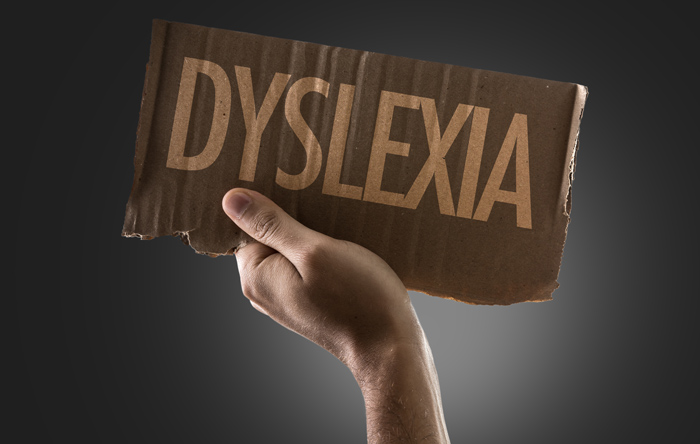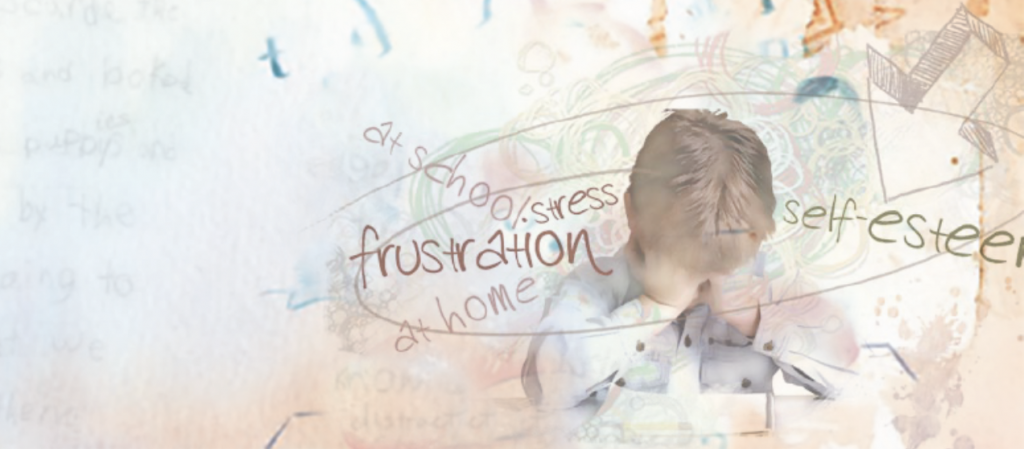Recognising Dyslexia
DFNZ supports a broad spectrum view of dyslexia. Common themes are that it is an alternative or atypical way of thinking; that it has a proven neurobiological basis; and that it occurs across a range of intellectual abilities. Dyslexia is a neurodiversity, where the brain is wired differently. Other neurodiversities include dyspraxia, dyscalculia, dysgraphia, autism spectrum and attention deficit hyperactivity.
The definition of dyslexia used by DFNZ is that it is: “A specific learning difference which is constitutional in origin and which, for a given level of ability, may cause unexpected difficulties in the acquisition of certain literacy and numeracy skills.”
Constitutional in origin refers to the fact that dyslexia has a substantive neurobiological basis. Brain research, including studies from Yale and Auckland universities, has shown that while it is common to use the ‘verbal’ left side of our brain to understand words, dyslexic people use the ‘pictorial’ right side – making them slower to process and understand language, but stronger in creative areas like problem solving, empathy and lateral thinking.
World dyslexia authority Sally Shaywitz, founder of the Yale Center for Dyslexia and Creativity is a pioneer in this area. Her laboratory was one of the first in the world to image the dyslexic brain using functional magnetic resonance imaging (fMRI). The data obtained from several thousand children and adults, combined with fMRI data from around the world, revealed a distinctive neural signature for dyslexia, with some parts of the modules for phonological awareness appearing in the right brain, and some visual processing modules located in the left brain.

Why the label can be liberating
– Guy Pope-Mayell, Chair of Trustees, DFNZ
Let’s for a moment put aside the debate over the cause of dyslexia and consider for a moment how dyslexia impacts all dyslexics. In other words – let’s humanise and ground the issue. Maybe then we can discover why almost all dyslexic people, as well as their families, employers and teachers can benefit from the label ‘dyslexia’.
Why is it that a parent can feel incredible relief, and often for the first time since their child started school, be free from a stress and frustration that is pervasive by nature – by discovering a label? Why is it that a manager can suddenly see hope and potential in someone who they had previously ‘given up on’? Why is it that the label is so often the starting point of an upward life spiral?
It is my observation that, in the absence of skillful intervention, when the dyslexic individual moves into the education system they become prone to self doubt and self-esteem issues. The development of self doubt has natural consequences. These consequences are fuelled by environments focused on comparison and arbitrary benchmarks, and where knowledge and understanding about dyslexia is often absent.
Similarly, by the time they reach the workforce, many dyslexics will have become used to being the one who always takes longer, who gets instructions wrong or makes elementary mistakes – and they may be only too willing to concur with an employer’s diagnosis that they are struggling.
The antidote to this self doubt is certainty. For the dyslexic, the label dyslexia can provide this. When dyslexia is understood as a potential creative gift this also gives hope. With certainty and hope an individual can move forward. This is the essence of the dyslexic journey – and the reason we believe New Zealanders of all ages should be proud of being dyslexic. Many successful New Zealanders are dyslexic, and have incredible stories to share. Click here to read these on our Inspiring New Zealanders webpage.
Understanding Dyslexia
If you or someone you know has been identified as dyslexic, it’s important to know that you/they are not alone. Dyslexia is an alternative way of thinking – a learning preference – that affects an estimated one in ten New Zealanders, including 70,000 schoolchildren.
Understanding dyslexia means noticing what this means for everyday life – at school, home and work. It also means understanding the common signs for dyslexia and how it may present itself. Dyslexia is perhaps best thought of as a continuum of abilities and difficulties rather than a distinct category, as it occurs across a range of intellectual abilities with no clear cut-off points.
While reading and writing can be challenging for dyslexic individuals, big picture skills like problem solving, creativity, high level conceptualisation and original insights are often real strengths.
In terms of everyday life impacts, dyslexia is usually first uncovered in the classroom environment when core reading and writing skills are being taught. However, it is equally common for dyslexia to go undiagnosed, with individuals labelled as ‘slow’ or ‘struggling’ due to unexpected difficulties in acquiring these skills.
As the individual moves beyond school into the workplace, these difficulties can be compounded by reliance on written formats and requirements around everything from rapid email communication through to understanding instructions. Even in jobs that are manually oriented, processing instructions and filling in work forms can be sources of challenge and frustration.
Those with dyslexia must be supported in education and in the workplace, and this often requires specific interventions, as well as awareness and understanding. For more guidance on dealing with dyslexia in the classroom, please click here.
For information on dyslexia and the family, click here, and for dyslexia and the workplace click here

Common signs of dyslexia
Dyslexia is often first uncovered in the classroom when core reading and writing is being taught. However, it is equally common for dyslexia to go undiagnosed, with individuals labelled as ‘slow’ or ‘struggling’ due to unexpected difficulties acquiring these skills.
Once out of school, everyday tasks like processing instructions, filling in forms, and dealing with predominant email and social communications can be ongoing sources of challenge and frustration. Some common sign of dyslexia include:
- Large gap between oral and written capabilities
- Poor handwriting, punctuation and grammar
- Frequent misspelling of words and mixing up words which sound similar (recession/reception), in speech or written work
- Letters or numbers reversed or transposed, ie b/d; p/q; n/u; 13/31
- Poor sense of direction – difficulty telling left from right
- Problems with labels, rhymes, sequences
- Being slower to process and needing repeated exposures to retain learning
- Retrieval issues – learns something one moment, gone the next
- Reluctance, embarrassment or avoidance around reading out loud
- A preference for face-to-face meetings/phone calls rather than email correspondence, and for charts/graphs over text
- Misunderstanding or misinterpretation of instructions
- Problems meeting deadlines, despite working hard
- Issues with fine motor coordination, eg tying laces, doing up buttons

Creative strengths
The upside of dyslexia is the ability to perceive the world from many perspectives, allowing visual-spatial thinking and special talents and skills to flourish in fields such as the arts, design, leadership, entrepreneurship, engineering, sciences, business and technology.
Excitingly, the leading edge of international research on dyslexia is focused on the creativity and strengths that this atypical way of thinking can offer. US researcher Tom West is a pioneer in this field, and his area of interest is the special talents of dyslexics. West believes that creative dyslexic individuals may be able to act as “engines for economic development”.
UK research shows that 35% of US entrepreneurs and 20% of UK entrepreneurs are dyslexic – with Sir Richard Branson a famous example. Entrepreneurs create jobs and wealth, both of which are important to drive economies forward. For more on this research click here. Dyslexic individuals also contribute to business growth and productivity through thinking outside the square, and enlightened employers around the world are now specifically recruiting dyslexics for the creativity and alternative thinking they bring.
Famous individuals with dyslexia include actors and entertainers Keira Knightley, Orlando Bloom, and John Lennon, as well as sports icons like Lewis Hamilton and Kobe Bryant, and celebrity chef Jamie Oliver. In New Zealand, creative leaders such as Academy Award winner Richard Taylor, musician Benee, All Blacks Coach Scott Robertson, and the late maverick motorcycle designer John Britten have harnessed their unique learning style to excel in their respective fields. You can discover more about these inspiring New Zealanders and their stories by clicking here.

Action
Once you’ve recognised and begun to understand the role dyslexia plays in your life or in the life of someone you know, it’s important to take action. Undoubtedly living with dyslexia can be difficult and disillusioning at times, particularly when others don’t seem to understand the way your brain is working. But you’re not alone – at least 10% of the population has dyslexia, and as we have seen, many dyslexic people throughout history have overcome difficulties with basic skills to become pioneers in their field.
Simple changes can make a world of difference in living with dyslexia. Often this means adjusting the approach and doing things in ways that suit the dyslexic style of thinking better.
As a problem, incorrectly addressed dyslexia can lead to disruptive classroom behaviour, alienation, anti-social behaviour, truancy, depression, suicide, drug use and crime. Overseas, a wealth of government-funded and private research has proven a high correlation between learning difficulties and behaviour problems, often culminating in crime. British, American and Swedish studies all estimate that 30-50% of prisoners are dyslexic and there is no reason to think that the New Zealand incidence would be any different.
As a solution, properly addressed dyslexia can fuel highly creative thinking and produce the kind of innovation and entrepreneurship needed in an increasingly ICT led world in challenging economic times. Recognising and harnessing the talents and creative strengths of dyslexics thus has the potential to deliver powerful social and economic impacts.
Personal responsibility and empowerment are key to taking effective action, and DFNZ encourages and supports all schools, teachers, support staff, parents and dyslexic individuals to act decisively and do whatever they can to make a difference.
Click here for more information on assessment providers.
Other useful resources:
• Dyslexia Characteristics
• Parent to Parent Support
• Secondary School Students / NCEA – help you can receive
• British Dyslexia Association
• Dyslexia in Ireland
